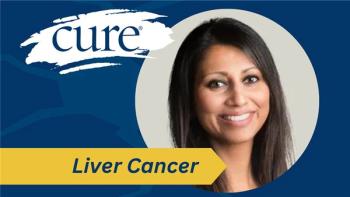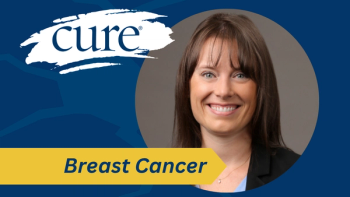For patients with advanced renal cell carcinoma (RCC), first-line Bavencio (avelumab) in combination with Inlyta (axitinib) was effective and safe in a real-world population and delivered results consistent with those previously reported in clinical trials, according to findings from the primary analysis of the AVION study, which were presented at the 2025 Genitourinary Cancers Symposium.
At a data cutoff date of July 5, 2024, among patients with advanced RCC in Belgium, Germany, Greece, and Russia enrolled in the trial who received the combination in routine clinical practice (104 patients), the median overall survival (OS) was not reached (NR), the six-month OS rate was 89.1%, and the 12-month OS rate was 82.7%.
“Overall, results from AVION demonstrate the effectiveness, safety, favorable tolerability and stable health-related quality of life [HRQOL] of [Bavencio plus Inlyta] in a heterogeneous real-world population,” lead study author Dr. Axel Stuart Merseburger, and coauthors wrote in a poster of the data.
Glossary:
Palmar-plantar erythrodysesthesia syndrome: a condition with redness and pain on the palms and soles, often from cancer treatment.
Hypertensive crisis: a severe spike in blood pressure, typically over 180/120 mm Hg, risking organ damage.
Complete response (CR): no evidence of cancer after treatment.
Partial response: a significant reduction in tumor size, but not complete elimination.
Stable disease: cancer that hasn't worsened or shrunk significantly.
Progressive disease (PD): cancer that is growing or spreading despite treatment.
Overall survival (OS) rate: the percentage of patients alive after a certain time post-treatment.
Duration of OS: the time from diagnosis/treatment to death or end of study.
Progression-free survival (PFS): the time a patient lives without cancer worsening.
Overall response rate (ORR): the percentage of patients whose cancer shrinks or disappears.
Duration of response (DOR): the time cancer remains controlled after treatment.
Disease control rate (DCR): the percentage of patients with CR, partial response, or stable disease.
Stable health-related quality of life (HRQOL): maintaining a stable quality of life despite disease presence.
Dysphonia: voice changes due to cancer or treatment effects on the vocal cords.
Pruritus: itching, often caused by cancer treatments or malignancy.
ECOG performance status of 0/1 or 2: level of functioning, where 0 indicates no symptoms, 1 means mild symptoms and 2 indicates moderate symptoms limiting some activities.
Merseburger is chairman of the Clinic of Urology at University Hospital Schleswig-Holstein in Lübeck, Germany.
Safety and HRQOL Data
Any-grade side effects (AEs) were observed in 83.7% of patients, and grade 3 (severe) or worse AEs were observed in 34.6% of patients. AEs led to discontinuation of Bavencio or Inlyta in 9.6% and 14.4% of patients, respectively.
Any-grade treatment-related AEs (TRAEs) were reported in 67.3% of patients, and grade 3 or worse TRAEs were reported in 20.2% of patients. TRAEs led to discontinuation of Bavencio or Inlyta in 6.7% and 9.6% of patients, respectively.
The most common TRAEs were diarrhea (any-grade, 26%; grade 3 or worse, 4.8%), fatigue (13.5%; 1.9%), hypertension (10.6%; 1%), hypothyroidism (8.7%; 0%), dysphonia (8.7%; 0%), nausea (7.7%; 0%), palmar-plantar erythrodysesthesia syndrome (7.7%; 0%), pruritus (6.7%; 0%), decreased weight (5.8%; 0%), dyspnea (3.8%; 1.9%) and hypertensive crisis (2.9%; 1.9%).
Serious AEs and serious TRAEs were noted in 36.5% and 14.4% of patients, respectively. A total of 10.6% of patients received corticosteroids, immunosuppressants or hormonal therapy to manage any-grade TRAEs.
AEs led to death in four patients, and TRAEs led to death in one patient.
Background Information
Previously, the phase 3 JAVELIN Renal 101 trial showed that first-line Bavencio plus Inlyta generated significantly longer progression-free survival (PFS), and higher objective response rates (ORRs) compared with Sutent (sunitinib) and had an acceptable, long-term safety profile in patients with advanced RCC. The final analysis of JAVELIN Renal 101 showed that in the overall population, at a minimum follow-up of 68 months, the median PFS was 13.9 months with the combination versus 8.5 months with Sutent. The ORRs in these respective arms were 59.7% and 32%.
Additionally, outcomes from the final OS analysis in the overall population favored the combination arm, although the OS difference between the two arms was not statistically significant. The median OS was 44.8 months with the combination versus 38.9 months with Sutent.
The findings from JAVELIN Renal 101 supported the 2019 FDA approval of Bavencio plus Inlyta for the first-line treatment of patients with advanced RCC. In 2019, the European Commission also approved the combination for this indication.
Despite these data and approvals, the AVION investigators noted that real-world data with the combination in clinical practice are limited.
AVION Trial Design
The prospective, noninterventional AVION study enrolled patients being treated for locally advanced, recurrent or metastatic RCC in Belgium, Germany, Greece, and Russia who had already received one or two doses of frontline Bavencio plus Inlyta; these patients received further treatment with the combination during AVION. Patients needed to be at least 18 years of age, have histologically confirmed disease with any histological origin, and have an ECOG performance status of 0 to 2.
Patients received Bavencio intravenously at 800 milligrams (mg) every two weeks and Inlyta orally at 5 mg twice daily.
The primary end goal was the OS rate at 12 months from the date of the first treatment received after informed consent. Secondary end points included the 24-month OS rate, duration of OS, PFS, ORR, duration of response (DOR), disease control rate (DCR), safety and HRQOL.
Patient Characteristics
In total, 105 patients were enrolled. One patient did not report Inlyta treatment prior to informed consent and was excluded from the analysis population.
Patients had a median age of 70 years; 34.6%, 40.4% and 25% of patients were younger than 65 years of age, between 65 and 75 years of age and older than 75 years of age, respectively. Most were male (70.2%). Additionally, 89.4%, 3.8% and 6.7% of patients had clear cell, sarcomatoid and other disease histology, respectively. PD-L1 status was negative, positive, not applicable and missing in 16.3%, 5.8%, 28.8% and 49% of patients, respectively. Prior anticancer treatments included adjuvant drug treatment (3.8%), surgery (75%), nephrectomy (66.3%) and radiotherapy (8.7%). At baseline, the median time since initial diagnosis was 0.7 years.
At the last follow-up, 20% of patients were still receiving Bavencio or Inlyta, 20% of patients had discontinued treatment and remained in follow-up, and 60% of patients had discontinued from the study. Reasons for study discontinuation included death (38.1%), completion of the study (28.6%), and loss to follow-up (15.9%).
The median duration of Bavencio treatment was 341 days, and the median duration of Inlyta treatment was 354 days. The median time to discontinuation of both Inlyta and Bavencio was 208 days.
Additional Efficacy Findings
Subgroup analyses of 12-month OS rates showed that among patients younger than 65 years of age, 65 to 75 years of age, and older than 75 years of age, the 12-month OS rates were 85.5%, 84.5% and 75.8%, respectively. Among patients with an ECOG performance status of 0/1 or 2, these rates were 84.3% and 57.1%, respectively. Among patients from Belgium, Germany, Greece and Russia, these respective rates were 87.5%, 86.2%, 71.9% and 95.2%.
Among patients with IMDC favorable-, intermediate-, and poor-risk disease, the 12-month OS rates were 92.6%, 74.1% and 82.5%, respectively. Among patients with clear cell, sarcomatoid, and other histologies, these respective rates were 83.1%, 100% and 66.7%. Patients who had undergone prior nephrectomy (69 patients) had a 12-month OS rate of 86.7% versus 73.4% among those who had not undergone prior nephrectomy (35 patients).
In the overall population, the median PFS was 11.3 months. The six- and 12-month PFS rates were 72.5% and 48.4%, respectively.
Among 87 response-evaluable patients, the ORR was 46%, including complete response (CR), partial response, stable disease, progressive disease (PD), and non-CR/non-PD rates of 4.6%, 41.4%, 31%, 20.7% and 2.3%, respectively. The DCR was 79.3% and the median DOR was NR.
References:
- “Real-world effectiveness and safety of first-line (1L) avelumab + axitinib in patients with advanced renal cell carcinoma (aRCC): primary analysis of the AVION study.” by Dr. Merseburger A, et al., J Clin Oncol.
- “Avelumab + axitinib versus sunitinib in patients (pts) with advanced renal cell carcinoma (aRCC): final overall survival (OS) analysis from the JAVELIN Renal 101 phase 3 trial.” by Dr. Motzer RJ, et al., J Clin Oncol.
For more news on cancer updates, research and education, don’t forget to subscribe to CURE®’s newsletters here.






